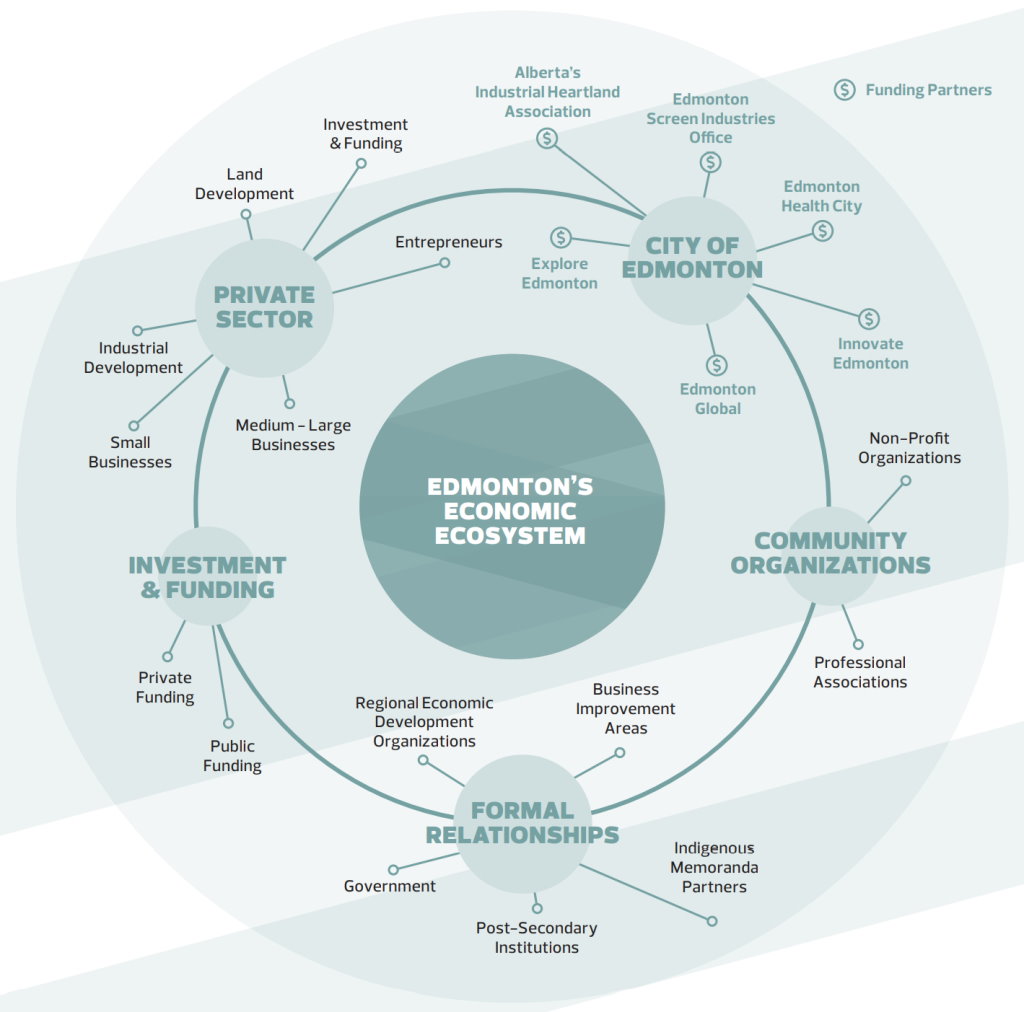The Edmonton Economic Action Plan consists of 24 actions to coordinate and drive economic development over the next decade with a goal of creating 121,000 net new jobs in Edmonton by 2030, a target that the city says incorporates the impacts of COVID-19.
Edmonton is currently home to more than 34,000 businesses and the city's economy accounts for nearly 70% of the Edmonton regional economy, according to the report. Last year, due to the COVID-19 pandemic and changes to the energy sector, Edmonton's regional economic output is estimated to have contracted by 5.9% with 62,200 fewer individuals employed. A full recovery to 2019 levels of output is not expected until 2022.
Administration says the challenge is "how to create the conditions for success in this new economy that demands agility and resilience."
The economic action plan, which will be discussed by city council's executive committee on April 12, "cascades" from the City Plan which is intended to help Edmonton prepare for two million people and 520,000 new jobs. Administration says the economic action plan was "built in partnership with 25 economic development partners" and "recognizes the importance of local economic development organizations who are already hard at work."
Actions in the plan include aligning relevant economic development activities and reporting metrics, making regulations and processes more efficient and streamlined, prioritizing local and equitable procurement, leveraging digital infrastructure like open data and the fibre optic network, encouraging low impact businesses in parks and public spaces, supporting emerging off-shoots of the energy sector, and expanding on existing relationships to support economic participation by Indigenous peoples, nations, and businesses in the region.

The private sector will largely be responsible for the success of the economic action plan, the city says.
Among the three long-term actions identified in the plan is Action 9, to "create a development strategy for the new non-residential lands adjacent to the Edmonton International Airport."
Action 3, which includes plans to "support building capacity and access to resources for entrepreneurs from marginalized communities, such as racialized entrepreneurs, and newcomers," is identified as one of the plan's ten priority actions. Administration says a Gender-Based Analysis Plus (GBA+) equity lens was used to develop the economic action plan, to "account for the disproportionate and systemic barriers and challenges some Edmontonians continue to face" and to ensure "more equitable and inclusive economic opportunities for all Edmontonians."
The action plan does not identify costs for specific actions but suggests the estimated resource requirements to implement all 24 could be as much as $3.3 million. "Given the city’s current fiscal constraints, implementation of the actions contained in this Action Plan will focus on reallocating and utilizing existing resources," the plan says. Action 19, "develop and implement an integrated place brand strategy," is projected to require the most resources at up to $1 million.
As a starting point, administration intends to bring forward the second phase of the Edmonton Economic Recovery Grant sometime in the next three months. The first phase offered $1,000 matching grants directly to businesses and $75,000 matching grants to business support projects and programs.
